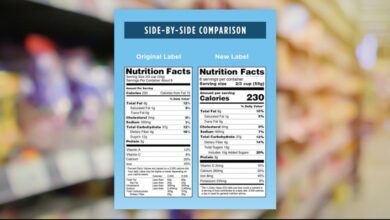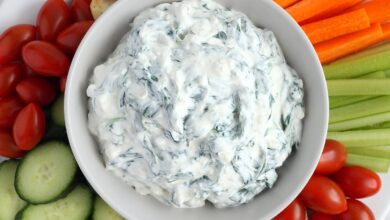
The diets associated with increased risk of heart disease are a significant concern for public health. This exploration delves into the detrimental effects of various dietary patterns, from the Mediterranean diet’s potential benefits to the Western diet’s often harmful components. We’ll examine the role of specific nutrients, cooking methods, and even dietary supplements in heart health. Understanding these connections is crucial for making informed choices about our daily meals.
This deep dive will compare the Mediterranean and Western diets, highlighting their contrasting macronutrient profiles and their impact on cardiovascular health. We’ll also examine how specific nutrients like saturated fats, sodium, and sugar contribute to heart disease risk factors. The impact of food processing, preparation methods, and portion control will be discussed, offering practical advice for healthy choices. The role of dietary supplements and cultural influences on diet will also be covered, leading to actionable recommendations and examples of heart-healthy meals.
Dietary Patterns Associated with Increased Heart Disease Risk
A healthy diet plays a crucial role in maintaining cardiovascular health. While various dietary patterns exist, some are strongly linked to an elevated risk of heart disease. Understanding these patterns allows individuals to make informed choices and adopt healthier eating habits. This exploration delves into the characteristics of the Mediterranean and Western diets, highlighting their contrasting effects on heart health.
The Mediterranean Diet: A Heart-Healthy Approach
The Mediterranean diet emphasizes whole, unprocessed foods, rich in fruits, vegetables, legumes, and whole grains. It’s characterized by the prominent inclusion of olive oil as the primary source of fat, alongside moderate consumption of fish, poultry, and dairy products. This dietary style is often associated with reduced risks of various chronic diseases, including heart disease.
- Key Components: The cornerstone of the Mediterranean diet is a high intake of fruits, vegetables, and whole grains. Olive oil is the preferred cooking oil, and nuts and seeds are also commonly consumed. Moderate amounts of fish, poultry, and dairy are included. Red meat and processed foods are consumed sparingly.
- Potential Benefits: Studies suggest that the Mediterranean diet can contribute to lower blood pressure, improved cholesterol levels, and reduced inflammation, all factors contributing to a lower risk of heart disease. The abundance of antioxidants and fiber in the diet further supports cardiovascular health.
The Western Diet: A Potential Risk Factor
The Western diet, in contrast, typically features a high intake of processed foods, red meat, saturated fats, and refined carbohydrates. It often lacks the variety and nutrient density seen in the Mediterranean diet. This dietary pattern is linked to a higher risk of heart disease due to its detrimental impact on various cardiovascular risk factors.
- Characteristics: The Western diet is frequently characterized by a reliance on processed foods, fast food, and sugary drinks. Red meat, high-fat dairy, and refined grains are often consumed in excess. Fruits and vegetables are often limited in quantity.
- Contribution to Heart Disease Risk: The high intake of saturated and trans fats in the Western diet can raise LDL (“bad”) cholesterol levels, increasing the risk of atherosclerosis (plaque buildup in the arteries). Excess refined carbohydrates can lead to insulin resistance and elevated blood sugar levels, further contributing to heart disease risk.
Macronutrient Comparison
The macronutrient profiles of the Mediterranean and Western diets differ significantly. This difference directly impacts cardiovascular health.
| Food Group | Mediterranean Diet Examples | Western Diet Examples | Potential Impact on Heart Health |
|---|---|---|---|
| Protein | Fish, poultry, beans, lentils | Red meat, processed meats, high-fat dairy | Lean protein sources in the Mediterranean diet can help manage cholesterol and blood pressure. Conversely, high intake of red and processed meats in the Western diet can elevate these risk factors. |
| Carbohydrates | Whole grains, fruits, vegetables | Refined grains, sugary drinks, processed snacks | The Mediterranean diet’s focus on whole grains and fiber-rich foods supports healthy blood sugar regulation. The Western diet’s reliance on refined carbohydrates can lead to blood sugar fluctuations and insulin resistance. |
| Fats | Olive oil, nuts, seeds | Saturated fats from red meat and processed foods, trans fats | The Mediterranean diet’s emphasis on unsaturated fats from olive oil and nuts can improve cholesterol profiles. The Western diet’s high intake of saturated and trans fats can raise LDL cholesterol and increase the risk of heart disease. |
Specific Nutrients and Their Impact
A diet’s impact on heart health isn’t just about avoiding certain foods; it’s also about understanding the specific roles of various nutrients. This exploration delves into the influence of saturated and trans fats, sodium, sugar, and cholesterol on cardiovascular well-being. Understanding these relationships is crucial for making informed dietary choices and mitigating the risk of heart disease.
Saturated and Trans Fats
Saturated and trans fats are significantly linked to elevated LDL (“bad”) cholesterol levels. These fats, primarily found in animal products and processed foods, can accumulate in the arteries, leading to plaque buildup and potentially narrowing the vessels. This narrowing can restrict blood flow, increasing the risk of heart attack or stroke. For example, consuming excessive amounts of red meat, butter, and fried foods high in saturated fats can contribute to this process.
Trans fats, often found in commercially baked goods and processed snacks, are particularly harmful due to their tendency to raise LDL cholesterol and lower HDL (“good”) cholesterol levels.
Excessive Sodium Intake
Excessive sodium intake is a major contributor to high blood pressure, a critical risk factor for heart disease. Sodium, when consumed in excess, causes the body to retain water, increasing blood volume and putting extra strain on the cardiovascular system. This increased strain can damage blood vessels over time, leading to a higher risk of heart disease. For instance, consuming highly processed foods, fast food, and restaurant meals often contains high amounts of sodium, which can negatively impact blood pressure.
Sugar Intake and Heart Disease
High sugar intake is associated with an increased risk of heart disease, although the exact mechanisms are complex and not fully understood. Excessive sugar consumption can contribute to weight gain, insulin resistance, and inflammation, all of which are factors that negatively affect cardiovascular health. For example, frequent consumption of sugary drinks, desserts, and processed foods high in added sugar can contribute to these health issues.
High Cholesterol and Heart Disease
High cholesterol levels, specifically high LDL cholesterol, can contribute to the development of atherosclerosis. This process involves the buildup of plaque within the arteries, reducing blood flow to the heart and other organs. The steps involved are as follows: 1. Elevated LDL cholesterol levels lead to the accumulation of cholesterol in the artery walls. 2.
Inflammation occurs at the site of cholesterol accumulation, attracting immune cells. 3. The immune cells and cholesterol form plaque, a hard deposit that narrows the artery. 4. Reduced blood flow to the heart can cause chest pain (angina) or, in severe cases, a heart attack.
High-fat diets and those lacking in fruits and vegetables are often linked to a higher risk of heart disease. Knowing if a food fits into a heart-healthy eating plan can be tricky, especially when it comes to seemingly simple choices like bread. For example, understanding if pita bread is gluten-free is important for people with dietary restrictions is pita bread gluten free , but it’s also relevant to overall heart health considerations.
Ultimately, a balanced diet rich in whole grains, lean proteins, and plenty of produce is crucial for maintaining cardiovascular well-being.
For example, individuals with a family history of high cholesterol or those with a sedentary lifestyle are more susceptible to this process.
Impact of Different Nutrients on Heart Health
| Nutrient | Source | Potential Impact | Recommended Intake |
|---|---|---|---|
| Saturated Fat | Animal products (meat, dairy), some plant oils | Elevates LDL cholesterol, increasing heart disease risk | Limit intake; choose healthier alternatives |
| Trans Fat | Processed foods, baked goods | Raises LDL cholesterol, lowers HDL cholesterol, increases heart disease risk | Minimize consumption |
| Sodium | Processed foods, restaurant meals, table salt | Contributes to high blood pressure, increasing heart disease risk | Limit intake; read food labels |
| Sugar | Sugary drinks, desserts, processed foods | Contributes to weight gain, insulin resistance, inflammation, increasing heart disease risk | Consume in moderation |
| Cholesterol | Animal products (meat, eggs, dairy) | High levels contribute to plaque buildup in arteries | Balance intake with other nutrients |
Processing and Preparation Methods

Beyond the specific diets and nutrients, the way we prepare our food plays a crucial role in heart health. The methods of processing and cooking significantly influence the nutritional value and ultimately, the impact on our cardiovascular system. Understanding these methods and their consequences is key to making informed choices.The journey from farm to fork significantly impacts the nutritional profile of our meals.
Modern food processing often involves refining ingredients, adding preservatives, and altering the original structure of the food. This can lead to a decrease in essential vitamins, minerals, and fiber, which are vital for overall health, including heart health.
Processed Foods and Heart Disease Risk
Processed foods, often high in sodium, unhealthy fats, and added sugars, are major contributors to heart disease risk. These ingredients, when consumed in excess, can lead to elevated blood pressure, increased cholesterol levels, and inflammation, all of which negatively impact heart health. For example, many processed meats are high in sodium and saturated fat, which can contribute to the buildup of plaque in the arteries, increasing the risk of heart attacks and strokes.
Regular consumption of processed foods is often linked to an increased risk of developing heart disease.
Cooking Methods and Nutritional Impact
Cooking methods can significantly alter the nutritional content of food. Frying, for example, often adds excess fat to the food, increasing its calorie and fat content. This, in turn, can contribute to weight gain and negatively affect heart health. Grilling, while a popular cooking method, can lead to the formation of harmful compounds if food is cooked at high temperatures for extended periods.
These compounds can potentially contribute to inflammation and oxidative stress, which are detrimental to cardiovascular health.
Healthy Cooking Methods and Their Benefits
Opting for healthier cooking methods can significantly reduce the risk of heart disease. Baking, steaming, and grilling at lower temperatures can retain more nutrients and minimize the formation of harmful compounds. Roasting and stir-frying are also suitable methods, provided the right fats and seasonings are used. Using herbs and spices to add flavor can be a healthier alternative to processed condiments, offering an array of vitamins and minerals without the added sodium and unhealthy fats.
High-fat diets and those lacking in fruits and vegetables are often linked to a higher risk of heart disease. But did you know that the nutritional differences between black raspberries and regular raspberries might play a role in overall heart health? To learn more about the nuances of these delicious berries, check out this helpful comparison: black raspberry vs raspberry.
Ultimately, a balanced diet rich in fruits, vegetables, and whole grains remains crucial for preventing heart disease.
Portion Control and Heart Health
Portion control is essential for managing heart disease risk. Even healthy foods, when consumed in excess, can contribute to weight gain and elevate blood pressure and cholesterol. Controlling portions allows for the consumption of nutrients without exceeding the recommended daily intake of calories and specific nutrients. Maintaining a healthy weight is a critical factor in preventing and managing heart disease.
Comparison of Healthy and Unhealthy Food Preparation Methods
| Preparation Method | Nutritional Impact | Heart Health Impact |
|---|---|---|
| Frying (deep) | High in added fat, loss of some nutrients | Increased risk of heart disease due to elevated fat and calorie intake. |
| Grilling (high heat) | Potential for formation of harmful compounds at high temperatures. | Increased risk of oxidative stress and inflammation. |
| Baking | Retains more nutrients, lower in fat. | Promotes heart health due to lower fat content. |
| Steaming | Preserves nutrients, minimal added fat. | A healthy cooking method that maintains the nutritional integrity of food. |
| Stir-frying (with healthy oils) | Allows for quick cooking and nutrient retention, depending on the oil used. | Beneficial if healthy oils are used, otherwise, risk of high fat intake. |
Dietary Supplements and Heart Health

Taking dietary supplements can be tempting, especially when it comes to heart health. But it’s crucial to understand that supplements are not a replacement for a healthy diet and lifestyle. They can be part of a comprehensive approach, but they should always be considered in consultation with a healthcare professional. This section will delve into the role of specific supplements, their potential benefits and risks, and the importance of professional guidance.Dietary supplements, including omega-3 fatty acids and vitamin D, may play a role in supporting cardiovascular health.
However, their effectiveness and safety vary significantly based on individual needs and circumstances. It’s essential to be aware of both the potential benefits and the potential risks before incorporating any supplement into your routine.
Role of Supplements in Cardiovascular Health
Supplements like omega-3 fatty acids and vitamin D have shown promise in supporting heart health. Omega-3s, particularly EPA and DHA, are known for their anti-inflammatory properties and potential to lower triglycerides and blood pressure. Vitamin D, while not directly lowering cholesterol, plays a crucial role in calcium absorption, which can indirectly impact heart health. These supplements may support overall cardiovascular health when combined with a healthy diet and lifestyle.
Potential Benefits of Supplements
Some supplements, particularly omega-3 fatty acids and vitamin D, may offer potential benefits for heart health. For example, omega-3s can potentially reduce the risk of irregular heartbeats, and vitamin D may help maintain healthy blood pressure levels. These potential benefits are not universally experienced, and the degree of benefit can vary greatly between individuals. It’s essential to understand that these supplements are not a cure-all for heart disease.
Potential Risks of Supplements
While supplements may have potential benefits, there are also potential risks. Some supplements can interact negatively with medications, leading to adverse effects. For instance, certain omega-3 supplements may interact with blood thinners, increasing the risk of bleeding. Furthermore, some individuals may experience allergic reactions or other adverse effects from supplements. It’s crucial to be aware of these potential risks and to discuss them with a healthcare professional before starting any supplement regimen.
Importance of Consulting a Healthcare Professional
Before taking any dietary supplement, it’s absolutely essential to consult with a healthcare professional. They can assess your individual health needs, evaluate potential interactions with existing medications, and determine the appropriate dosage and duration of supplementation. This personalized approach is critical to ensuring the safety and effectiveness of the supplements.
Examples of Supplements and Recommended Dosages
- Omega-3 Fatty Acids (EPA and DHA): A common recommendation for omega-3s is 1-4 grams daily, depending on individual needs and health conditions. However, it’s crucial to consult a doctor for personalized dosage recommendations.
- Vitamin D: The recommended daily intake of vitamin D varies, often between 600 and 800 IU for adults. However, individual needs can differ, so a healthcare professional can provide the most accurate recommendation.
Summary Table of Dietary Supplements for Heart Health
| Supplement | Potential Benefits | Potential Risks |
|---|---|---|
| Omega-3 Fatty Acids | Lowering triglycerides, reducing inflammation, potentially improving blood pressure | Interactions with blood thinners, allergic reactions, stomach upset |
| Vitamin D | Supporting calcium absorption, potentially aiding in blood pressure regulation | Interactions with certain medications, high doses may cause kidney problems |
| CoQ10 | Supporting energy production in heart cells, potential antioxidant effects | Rare but possible side effects like muscle pain or digestive issues. |
| Garlic | Potentially lowering blood pressure and cholesterol | Possible interactions with medications, stomach upset |
Cultural and Socioeconomic Factors: The Diets Associated With Increased Risk Of Heart Disease
Cultural and socioeconomic factors play a significant role in shaping dietary patterns and, consequently, the risk of heart disease. Understanding these influences is crucial for developing effective strategies to promote heart health across diverse populations. Different cultures often have unique dietary traditions, which can be either protective or detrimental to cardiovascular health. Furthermore, socioeconomic status can influence access to healthy foods, cooking knowledge, and overall lifestyle choices, impacting heart disease risk.Cultural dietary traditions, often passed down through generations, can profoundly affect the foods consumed and the way they are prepared.
High-fat diets and those lacking in fruits and vegetables are often linked to heart disease. But beyond the physical impact, these dietary choices can also affect overall well-being, including aspects like sexual health. Understanding how diet influences various aspects of health, including talking about sexual dysfunction , can help us make informed choices about our bodies and overall wellness.
Ultimately, focusing on a balanced diet is crucial for preventing heart disease and maintaining a healthy lifestyle.
These traditions, while important for cultural identity, can also contribute to either lower or higher risks of heart disease, depending on the specific dietary components. Socioeconomic factors, including income, education, and access to resources, can significantly influence dietary choices. Lower socioeconomic status can often limit access to fresh, nutritious foods, potentially leading to diets higher in processed foods and saturated fats, increasing the risk of heart disease.
Food insecurity, the lack of consistent access to enough food for active and healthy living, further exacerbates these issues. It can significantly impact dietary patterns, making it challenging to obtain a balanced diet and leading to potential nutritional deficiencies that contribute to heart disease risk.
Cultural Dietary Traditions and Heart Disease Risk, The diets associated with increased risk of heart disease
Cultural dietary traditions often influence the types of foods consumed, cooking methods, and portion sizes. These practices, while rooted in cultural heritage, can impact heart health. Some cultures prioritize plant-based diets rich in fruits, vegetables, and whole grains, which can be protective against heart disease. Conversely, other cultures might favor diets higher in processed foods, saturated fats, and sodium, increasing the risk of cardiovascular problems.
For instance, diets heavily reliant on red meat and processed foods, common in some Western cultures, are linked to higher rates of heart disease compared to diets with a greater emphasis on plant-based foods.
Socioeconomic Status and Dietary Choices
Socioeconomic status plays a pivotal role in shaping dietary choices and, consequently, heart disease risk. Individuals with lower socioeconomic status often face challenges accessing fresh, healthy foods due to limited budgets and geographic barriers. This can lead to a reliance on cheaper, processed foods that are higher in saturated and trans fats, salt, and sugar. Furthermore, limited access to cooking facilities or knowledge about healthy cooking methods can further exacerbate this issue.
Individuals in lower socioeconomic groups may also experience higher stress levels, which can negatively impact dietary choices and overall health.
Food Insecurity and Dietary Patterns
Food insecurity, the consistent lack of access to sufficient food for an active and healthy life, poses a significant threat to heart health. Food insecurity often forces individuals to rely on readily available, but less nutritious, food options. This can lead to diets lacking essential nutrients, increasing the risk of chronic diseases, including heart disease. The prevalence of food insecurity varies across regions and communities, highlighting the importance of targeted interventions to improve access to healthy foods for vulnerable populations.
Examples of Cultural Diets and Their Impact on Heart Disease Risk
| Cultural Background | Dietary Habits | Potential Impact on Heart Health |
|---|---|---|
| Mediterranean Diet (Greece, Italy, Spain) | Emphasis on fruits, vegetables, whole grains, olive oil, and fish. Moderate intake of dairy and red meat. | Generally associated with lower rates of heart disease due to high antioxidant content and healthy fats. |
| Traditional Asian Diets (e.g., Japanese, Chinese) | Often include a variety of fresh vegetables, whole grains, and lean proteins. Varying levels of fish consumption. May include soy-based products. | May offer protection against heart disease depending on specific components of the diet. |
| Western Diets (e.g., United States, Canada) | High consumption of processed foods, red meat, saturated fats, and refined grains. Often low in fruits and vegetables. | Linked to higher rates of heart disease due to high saturated fat and sodium content. |
| South Asian Diets (e.g., India, Pakistan) | Often include a mix of plant-based foods, dairy products, and some meat. Varying levels of processed foods and refined grains. | Risk depends on the specific components of the diet. Potential for high intake of saturated fats and sugars from dairy and processed foods. |
Practical Dietary Recommendations
Taking control of your heart health starts with making conscious choices about what you eat and how you live. This involves understanding which foods support a healthy heart and which ones should be consumed in moderation or avoided altogether. A heart-healthy diet isn’t about deprivation, but about making informed choices that lead to long-term well-being.Implementing these recommendations requires a shift in perspective, moving away from quick fixes and toward sustainable lifestyle changes.
This approach prioritizes consistency and long-term adherence over temporary trends. It’s about building healthy habits that become an integral part of your daily routine.
Incorporating Heart-Healthy Foods
A heart-healthy diet emphasizes fruits, vegetables, whole grains, and lean proteins. These foods are rich in essential nutrients, antioxidants, and fiber, all of which contribute to a healthy cardiovascular system. Increasing consumption of these foods can significantly reduce the risk of heart disease.
- Fruits and vegetables are excellent sources of vitamins, minerals, and antioxidants. Aim for a variety of colors, ensuring you’re consuming a rainbow of fruits and vegetables each day. Berries, leafy greens, and citrus fruits are particularly beneficial. Examples include apples, oranges, spinach, and blueberries.
- Whole grains provide complex carbohydrates, fiber, and essential nutrients. Choose options like brown rice, quinoa, oats, and whole-wheat bread over refined grains. Fiber helps regulate blood sugar and cholesterol levels.
- Lean proteins, such as fish (especially fatty fish like salmon), poultry without skin, and beans, are important for building and repairing tissues. They are lower in saturated fat compared to red meat.
Reducing Consumption of Unhealthy Foods
Reducing the consumption of foods that increase the risk of heart disease is just as important as incorporating healthy foods. This involves limiting saturated and trans fats, sodium, and added sugars.
- Saturated and trans fats raise LDL (“bad”) cholesterol levels, increasing the risk of plaque buildup in the arteries. Limit red meat, processed meats, full-fat dairy products, and fried foods. Look for healthier cooking methods like baking, grilling, or steaming instead of frying.
- Excessive sodium intake can lead to high blood pressure, a major risk factor for heart disease. Limit processed foods, canned goods, and restaurant meals, and use herbs and spices to enhance flavor instead of salt.
- Added sugars contribute to weight gain and increase the risk of several health problems, including heart disease. Choose unsweetened beverages and limit sugary snacks and desserts.
Significance of Regular Physical Activity
Regular physical activity is crucial for maintaining a healthy heart and reducing the risk of heart disease. Exercise helps improve cardiovascular fitness, lower blood pressure, and control weight. The recommended amount of physical activity varies based on individual needs and health conditions. Consult a healthcare professional for personalized advice.
- Aim for at least 150 minutes of moderate-intensity aerobic activity or 75 minutes of vigorous-intensity aerobic activity per week, along with muscle-strengthening activities on two or more days a week. Examples include brisk walking, jogging, swimming, or cycling.
Practical Steps to Implement a Heart-Healthy Diet
Implementing a heart-healthy diet involves taking small, manageable steps to gradually integrate these changes into your daily routine. The key is to focus on making sustainable, long-term changes rather than drastic, short-term adjustments.
“Small changes over time can lead to significant improvements in heart health.”
- Gradually reduce the intake of unhealthy foods, replacing them with healthier alternatives. Start with one or two foods at a time.
- Plan meals and snacks in advance to make healthy choices easier. Prepare meals at home more often to control ingredients and portion sizes.
- Focus on portion control. Use smaller plates and bowls to help regulate intake.
- Read food labels carefully to understand the nutritional content of packaged foods.
- Seek support from family, friends, or a registered dietitian for guidance and motivation.
Illustrative Examples of Heart-Healthy Meals
Savoring delicious and nutritious meals doesn’t have to be a compromise on heart health. This section explores balanced, heart-healthy meal plans for various dietary needs, offering specific examples and insights into their nutritional benefits. We’ll delve into the ingredients, preparation methods, and overall impact on cardiovascular well-being.Understanding the importance of balanced nutrition in maintaining heart health is crucial.
A heart-healthy diet, rich in fruits, vegetables, whole grains, and lean proteins, plays a vital role in reducing the risk of heart disease. The following examples showcase diverse meal plans that can be adapted to individual preferences and dietary requirements.
Vegetarian Heart-Healthy Meal Plan
Vegetarian diets, rich in plant-based foods, offer numerous cardiovascular benefits. These meals are packed with essential nutrients while minimizing saturated and unhealthy fats.
- Breakfast (Monday): Oatmeal with berries and nuts. The oatmeal provides complex carbohydrates for sustained energy, while berries offer antioxidants and vitamins. Nuts contribute healthy fats and protein. This breakfast is low in saturated fat and high in fiber, aiding in cholesterol management.
- Lunch (Wednesday): Quinoa salad with roasted vegetables (zucchini, bell peppers, eggplant) and chickpeas. Quinoa is a complete protein source, providing all essential amino acids. Roasted vegetables offer vitamins, minerals, and fiber. Chickpeas add protein and fiber, supporting heart health.
- Dinner (Friday): Lentil soup with whole-wheat bread. Lentils are a fantastic source of protein and fiber, promoting satiety and aiding digestion. Whole-wheat bread provides complex carbohydrates. This meal is low in saturated fat and high in fiber, contributing to healthy cholesterol levels.
Vegan Heart-Healthy Meal Plan
Vegan diets prioritize plant-based foods, excluding all animal products. These meals are excellent for maintaining heart health, focusing on whole foods and minimizing processed ingredients.
- Breakfast (Tuesday): Tofu scramble with spinach and whole-wheat toast. Tofu provides protein and essential amino acids. Spinach offers vitamins and minerals. Whole-wheat toast supplies complex carbohydrates and fiber. This breakfast is low in saturated fat and cholesterol, while offering a complete protein source.
- Lunch (Thursday): Black bean burgers on whole-wheat buns with a side salad. Black beans provide protein and fiber. Whole-wheat buns provide complex carbohydrates. A side salad with leafy greens, tomatoes, and cucumbers adds vitamins and minerals, promoting heart health.
- Dinner (Saturday): Vegetable stir-fry with brown rice. A variety of colorful vegetables, such as broccoli, carrots, and peppers, provide vitamins, minerals, and antioxidants. Brown rice offers complex carbohydrates and fiber. This meal is low in saturated fat and high in fiber, beneficial for heart health.
7-Day Heart-Healthy Meal Plan
This plan emphasizes whole foods, lean proteins, and plenty of fruits and vegetables. It’s designed to be flexible and can be adapted to individual needs.
A heart-healthy diet focuses on consuming whole, unprocessed foods, reducing saturated and trans fats, and increasing fiber intake.
| Day | Breakfast | Lunch | Dinner |
|---|---|---|---|
| Sunday | Greek yogurt with granola and fruit | Salad with grilled chicken breast | Baked salmon with roasted asparagus and quinoa |
| Monday | Oatmeal with berries and nuts | Lentil soup with whole-wheat bread | Vegetable stir-fry with brown rice |
| Tuesday | Tofu scramble with spinach and whole-wheat toast | Quinoa salad with roasted vegetables and chickpeas | Chickpea curry with brown rice |
| Wednesday | Smoothie with fruit, spinach, and protein powder | Turkey breast salad with mixed greens and vinaigrette | Lean ground beef with steamed broccoli and sweet potato |
| Thursday | Whole-wheat pancakes with fruit and maple syrup | Black bean burgers on whole-wheat buns with a side salad | Vegetarian chili with whole-wheat crackers |
| Friday | Scrambled eggs with vegetables and whole-wheat toast | Hummus and veggie wrap with whole-wheat tortilla | Baked chicken breast with roasted vegetables |
| Saturday | Breakfast burrito with scrambled eggs, beans, and salsa | Leftovers from dinner | Pasta with marinara sauce and lean meatballs |
- Dietary Guidelines: Limit processed foods, sugary drinks, and excessive salt intake. Choose lean proteins, whole grains, and plenty of fruits and vegetables. Stay hydrated by drinking plenty of water.
Last Point
In conclusion, understanding the diets associated with increased risk of heart disease is crucial for proactive health management. By understanding the differences between healthy and unhealthy dietary choices, and how various factors influence these choices, individuals can take control of their heart health. The exploration of specific nutrients, processing methods, and even cultural influences provides a comprehensive view.
Ultimately, a heart-healthy lifestyle involves informed choices, balanced nutrition, and mindful preparation. This knowledge empowers individuals to make sustainable dietary changes that promote a healthier future.





